Dos & Don'ts: Crossing the street
in Vietnam
Crossing the street in Vietnam is an exhilarating experience that will thrill even the most seasoned travellers.
Don’t worry! With these tips, you’ll be crossing with confidence in no time.
Vietnamese traffic is a mesmerizing, chaotic dance of motorbikes, bicycles and cars, weaving through streets, but sometimes with little regard for lanes or traffic lights. With over 45 million motorbikes in the country, they outnumber cars by a staggering 18 to 1. The sheer volume and intensity can be overwhelming for newcomers, but locals navigate it with a skill that’s almost artistic. Crossing the street is a thrilling experience where you learn to trust the flow and just keep walking—locals will swerve around you. This bustling flow reflects Vietnam’s vibrant and fast-paced urban life, making every commute an adventure.
To help you navigate this exhilarating experience, here are some do’s and don’ts for safely crossing the street in Vietnam:
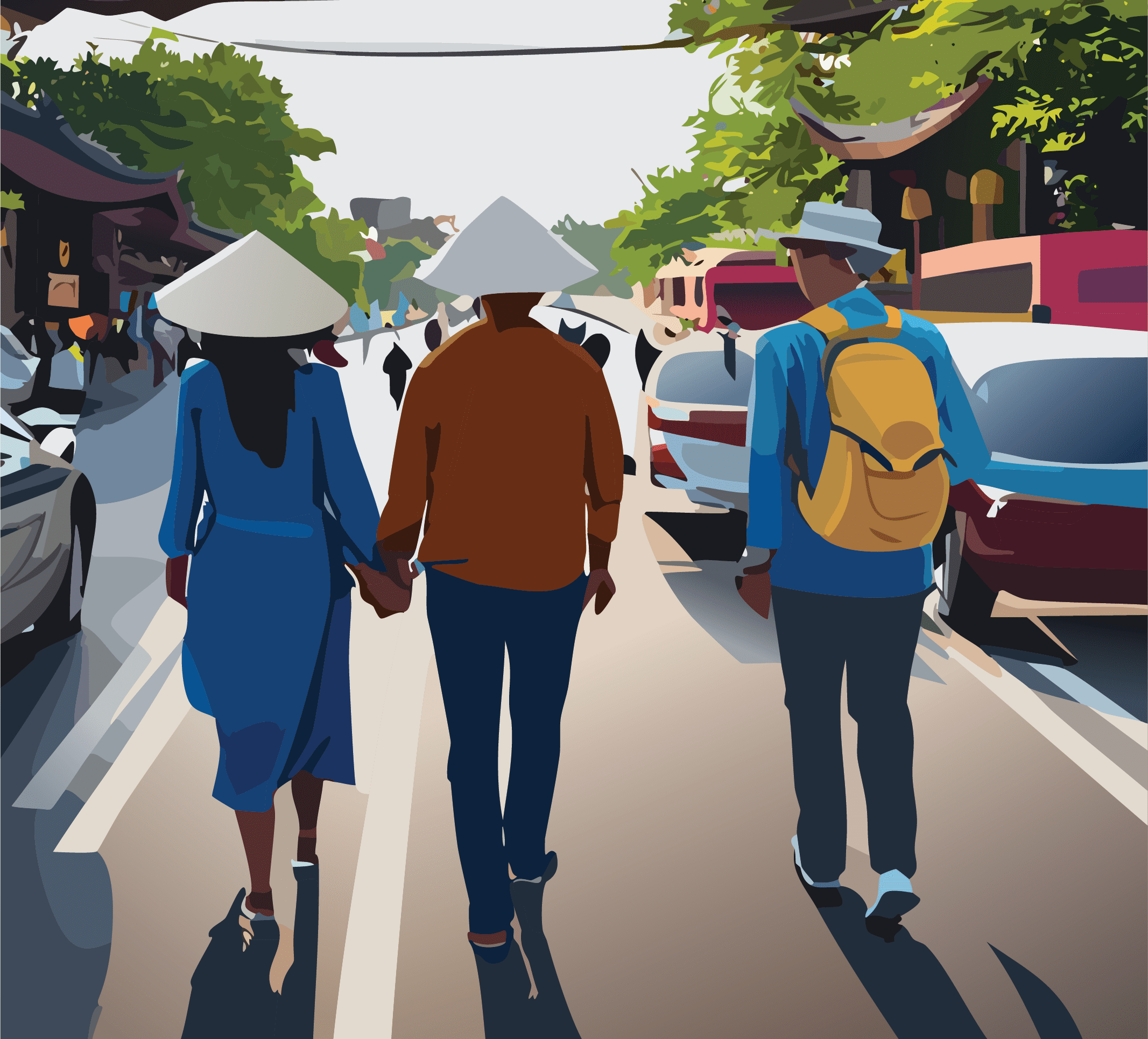
Do keep the same pace
Keep a steady pace and walk with confidence. Just like you, drivers are trying to read the road and gauge the safest route. The best thing you can be is predictable.
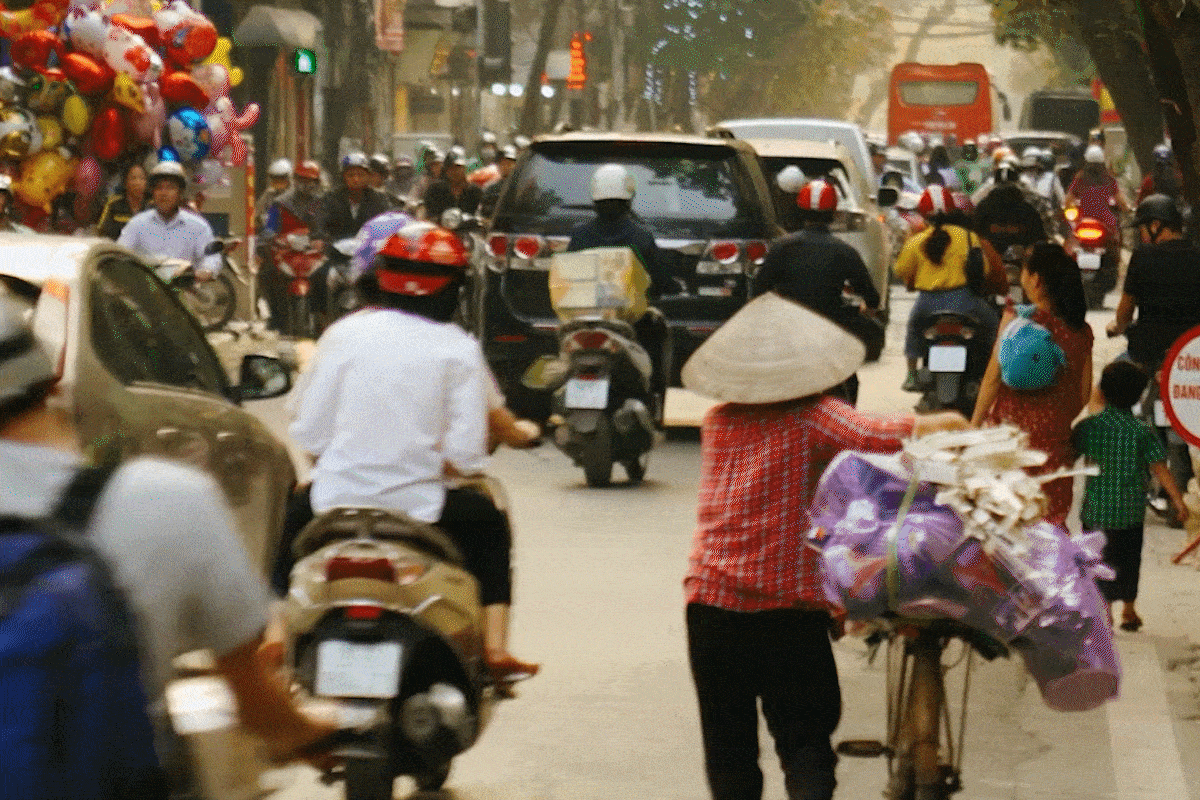
Do raise your arm
Make yourself more visible to oncoming traffic by waving an arm in the air or by keeping your hand up as you cross.
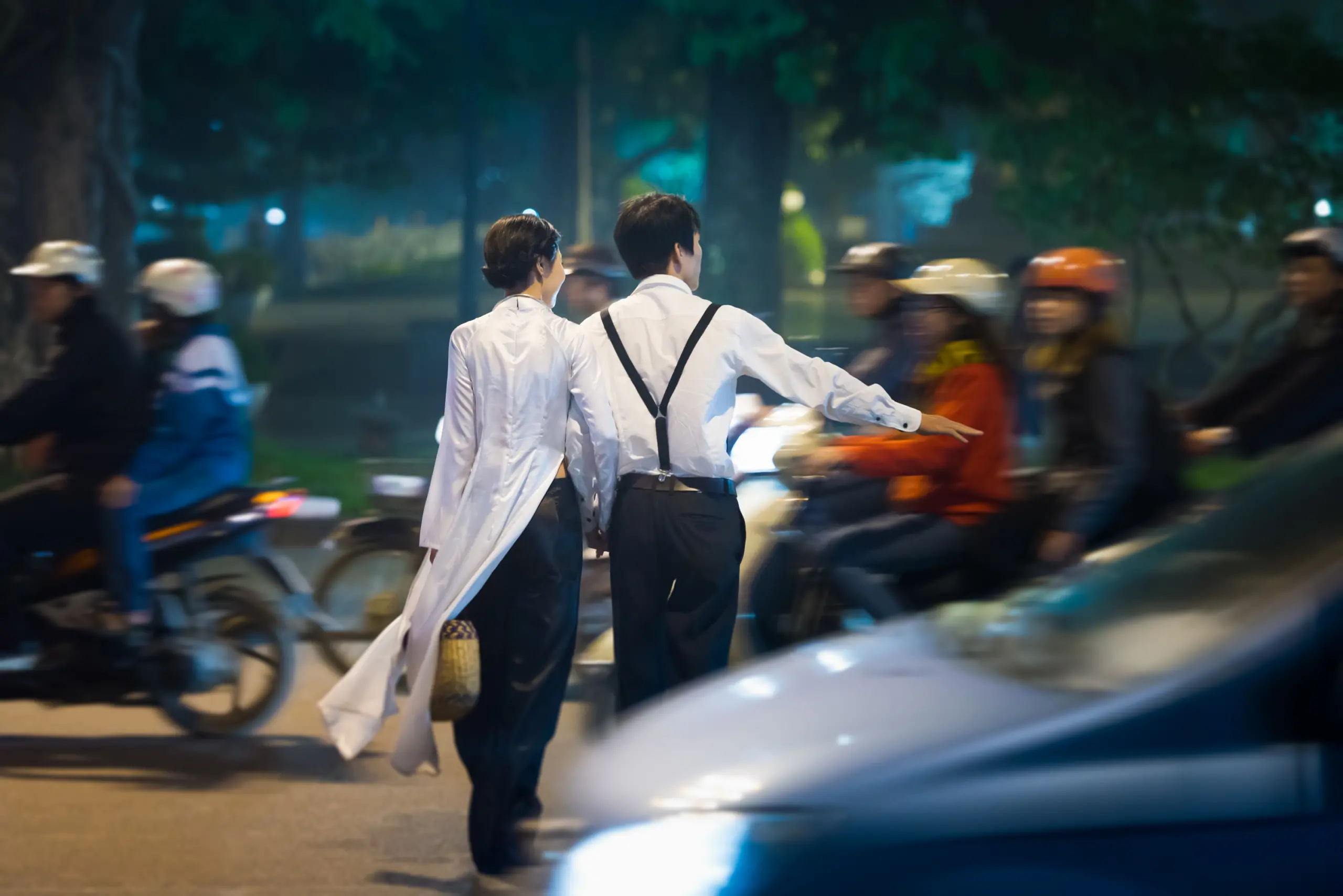
Do cross in groups
There’s safety in numbers. If possible, cross in a group, or ask a local to help you. Most people in Vietnam are friendly and accustomed to giving tourists a hand. TIP: If you’re crossing in a group, be sure to walk shoulder to shoulder so you take up as little of the road as possible.
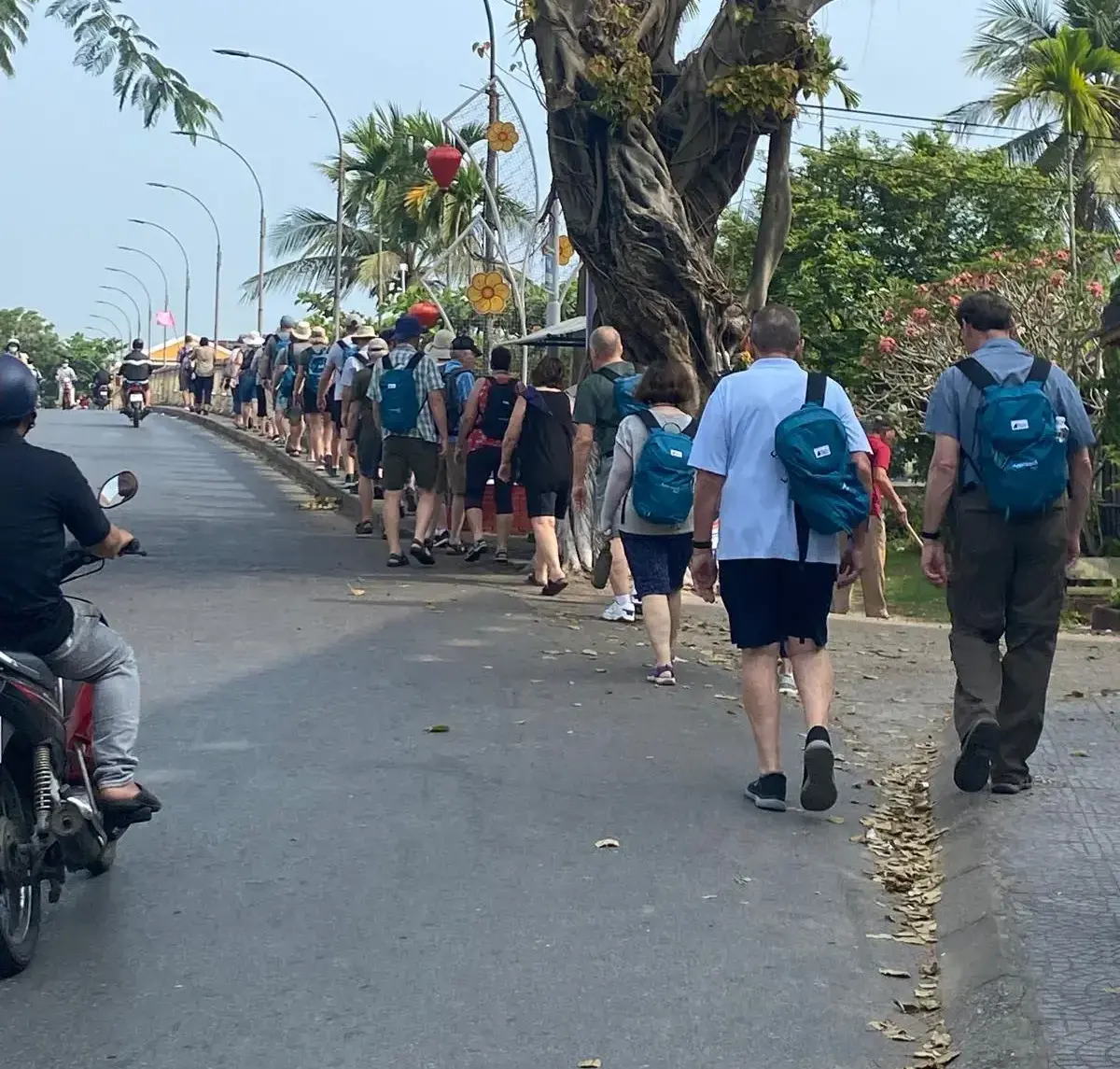
Don’t stop
Don’t stop or turn back once you start crossing. This may seem counterintuitive as motorbikes and cars whizz past you, but it’s much more dangerous to halt suddenly or change directions.
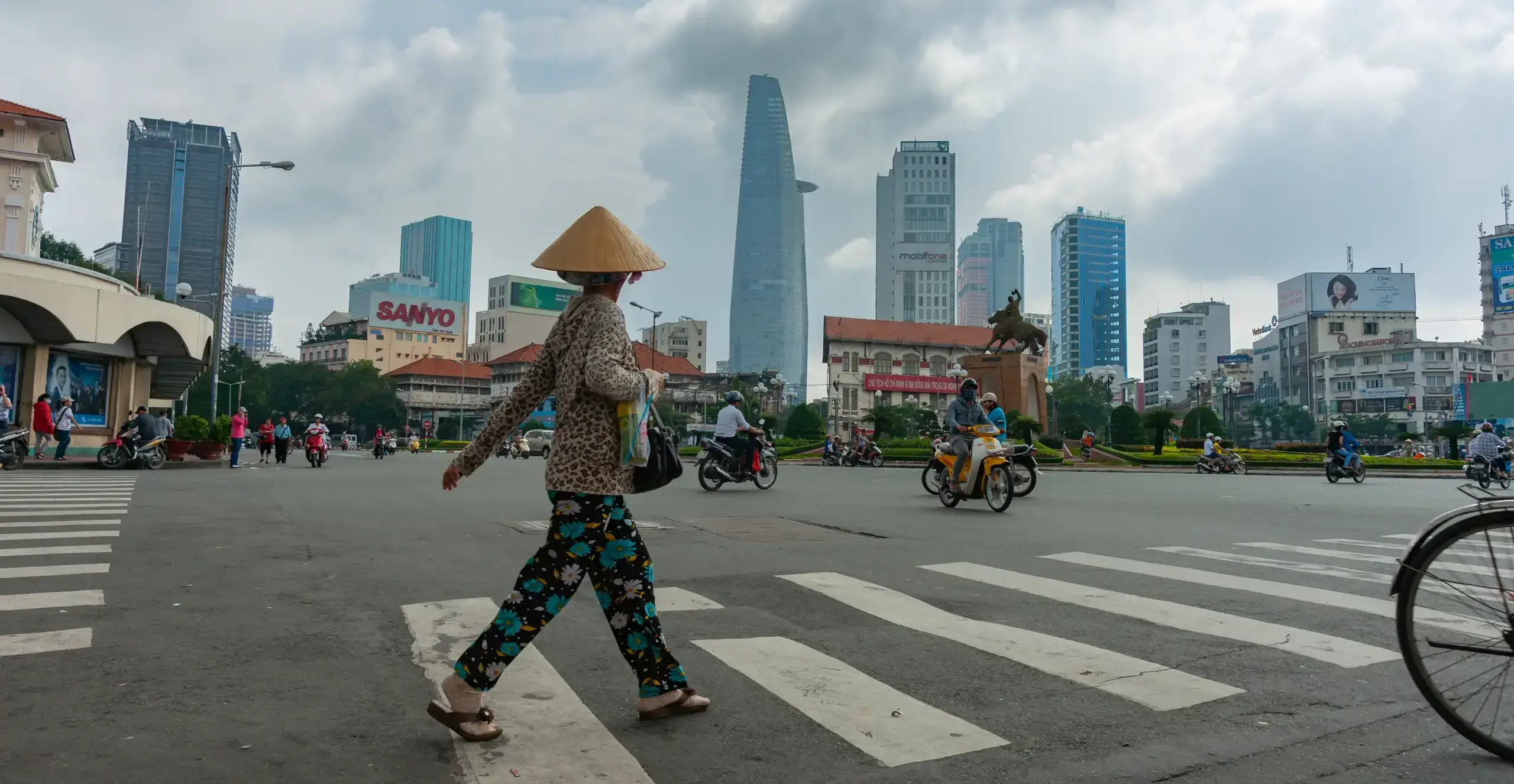
Don’t be alarmed by honking
In Vietnam, honking is not used as an aggressive gesture, but an acknowledgement of someone’s presence. You’ll hear lots of honking in Vietnam, so don’t panic. Take a deep breath and embrace the chaos.

Don’t think you have the right of way
Even at a crosswalk or red light, most buses and cars won’t stop for you. Be aware of your surroundings and only cross when there aren’t any large vehicles coming your way.
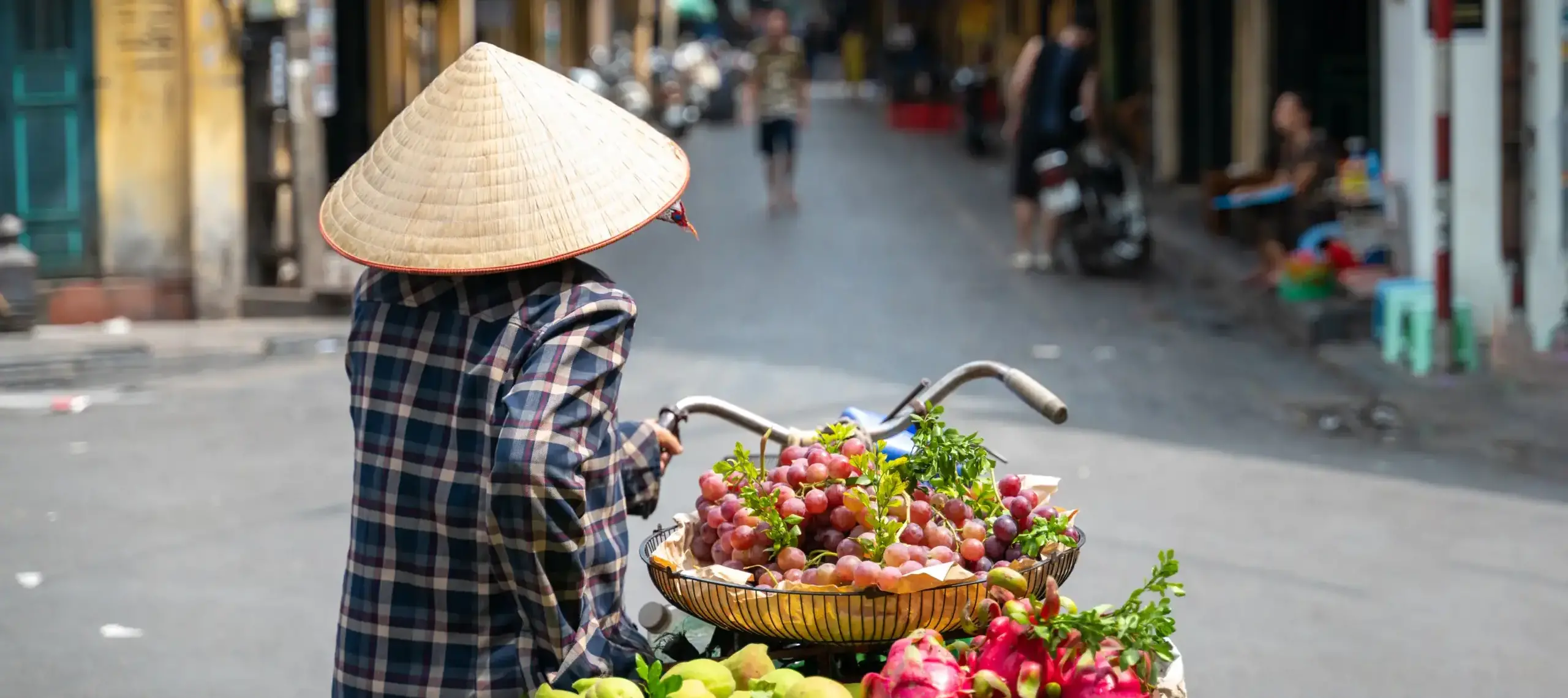
Traffic levels in Vietnam’s major cities:
Ho Chi Minh – High
Traffic in Ho Chi Minh City is extremely heavy. As of recent estimates, the city has approximately 8 million motorbikes and 627,000 cars registered.
Hanoi – High
Traffic in Hanoi is very heavy, with around 5 million motorbikes and numerous cars on the road each day.
Hoi An – Moderate
Hoi An’s Ancient Town has moderate traffic, mostly made up of pedestrians and bicycles since there are restrictions in place for motorized traffic.
Hue – Moderate
Hue has moderate traffic, with a mix of motorbikes and bicycles. It’s less congested than larger cities, making it more navigable with fewer vehicles on the road daily.
While the traffic in Vietnam can at times feel chaotic, this country is also home to beautiful tranquility. On a busy street bustling with cars, you’ll also see families savouring their meal. A crowded market with overly enthusiastic vendors holds intricate, handcrafted treasures. The rowdy experience of crossing the street is just the perfect counterbalance to the friendly, laid-back energy of Vietnam and its people.
Embrace all Vietnam has to offer on tour!
Vietnam & Angkor Wat
If you come to Vietnam for the delicious food, dramatic landscapes and bustling markets, you will stay for the people whose complex history and rich heritage continue to seduce even the most seasoned travellers. Be humbled by the recounting of war-time stories with French colonial buildings as a backdrop in Ho Chi Minh City. Embrace the sense of awe that takes over while waking up to the dragon-like island formations dotting Ha Long Bay. Get up close and personal with locals while discovering true foodie culture, spanning from humble broths to rich curries. The sprawling temples of Angkor will leave you speechless, as Cambodia’s ancient traditions contrast with modern culture.
Departures: October & November 2025February & March 2026October & November 2026 (+$200)
